The Road Vehicle Standards Act (RVSA) is set to come into effect on July 1 2021. Replacing the Motor Vehicle Standards Act (1989), the RVSA includes a raft of measures designed to improve the safety and compliance of motorised and towed vehicles.
Key among these changes is an end to the so-called ‘selfcertification’ of RVs, in which manufacturers could declare their own vans to be compliant and ‘fit for service’, and the establishment of the Register of Approved Vehicles (RAV). Vehicles and trailers that don’t appear on the RAV will not be able to be registered.
Revision 6 of the Vehicle Standards Bulletin 1 – Trailers with an Aggregate Trailer Mass of 4.5 Tonnes or Less contains updates integral to the RVSA.
With that in mind, we wanted to revisit the definitions of the terms related to caravan weights, as found in the updated VSB 1. After all, if there is one subject related to caravanning that is guaranteed to cause confusion and debate, it’s caravan weights. What’s Aggregate Trailer Mass (ATM), and what about that Gross Trailer Mass (GTM) thing?
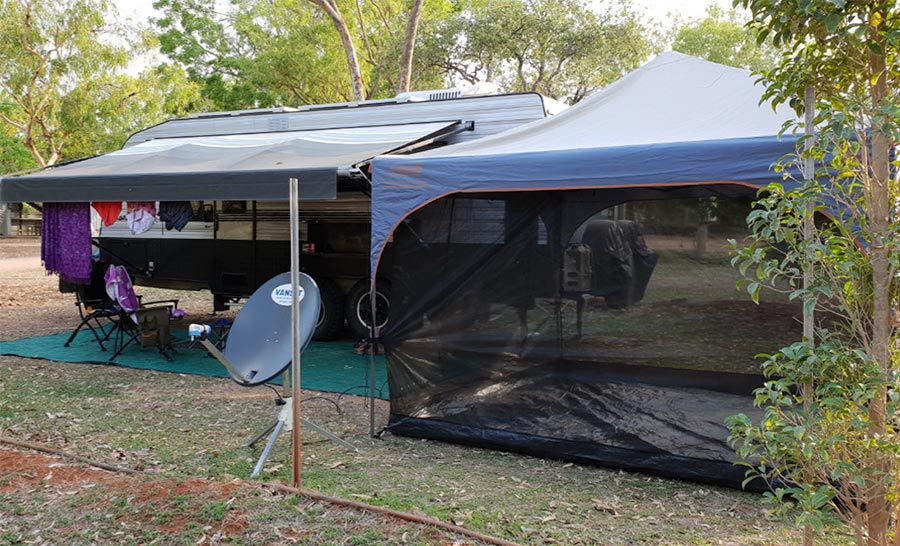
Here’s what the revised VSB 1 has to say:
TARE
VSB 1 STATES:
(The definition of trailer Tare Mass … is currently under review)
Tare Mass is the total mass of the trailer when not carrying any load, and with all fluid reservoirs (if fitted) filled to nominal capacity. (Fluid reservoirs do not include water tanks and waste water tanks in caravans.) Tare Mass includes the mass imposed on the towing vehicle, when the combined tow vehicle and trailer are resting on a horizontal surface.
Tare mass is specified:
• With the trailer ‘ready for service’; that is, with all standard equipment and any options fitted.
• At the time of entry onto the RAV.
GROSS TRAILER MASS
VSB 1 STATES:
GTM is the specified mass transmitted to the ground by the tyres of the trailer when coupled to a towing vehicle and carrying the maximum load recommended by the manufacturer, approximately uniformly distributed over the load-bearing area. The manufacturer must have shown the trailer complies with the ADRs (Australian Design Rules) at this mass.
GTM is the maximum weight (as set by the manufacturer) the trailer may apply through the trailer’s tyres. In this specification, the trailer is fully loaded.
AGGREGATE TRAILER MASS
VSB 1 STATES:
ATM is the total mass of the trailer when carrying the maximum load recommended by the manufacturer. ATM includes the mass imposed on the towing vehicle, when the combined tow vehicle and trailer are resting on a horizontal surface. Note: The maximum load the trailer can carry is the same when determining both GTM and ATM.
ATM is the maximum weight acting downwards through both the trailer tyres and the trailer coupling the trailer is designed for. In this specification, the trailer is fully loaded.
PAYLOAD CAPACITY
When it comes to establishing a caravan’s payload, Revision 6 of VSB 1 offers the following: How does Tare Mass and Aggregate Trailer Mass (ATM) determine how heavy a load can be carried on trailer?
In all trailers, ATM minus Tare Mass equals the maximum load the trailer can carry. For example, if a car trailer has a Tare Mass of 700kg and the ATM is specified at 2000kg, the trailer can carry a car that has a mass of up to 1300kg.
DECLARING THE WEIGHTS
According to the revised VSB 1, the caravan’s vehicle plate – along with the caravan’s listing on the RAV – must contain the ATM, GTM and Tare. “A breach of the Act is committed if a manufacturer or importer incorrectly states any of these values,” VSB 1 says.
ARE THESE DEFINITIONS ADEQUATE?
Colin Young of the Caravan Council of Australia has issued a statement in which he points to the lack of the word ‘rating’ within the definitions of ATM and GTM as being a serious flaw.
“The number one problem in the caravan industry is the lack of understanding of ratings and masses,” Mr Young said. “Ratings and masses have not been satisfactorily addressed in the updated VSB 1. “These two figures (ATM and GTM) are ratings that are allocated by the manufacturer. Ball-loading and Tare are ‘actual masses’ that must be measured.” He said that the CCA made numerous submissions and recommendations, particularly in relation to clarifying such terminology, that were not included in Revision 6 of VSB 1.
My Young believes that the revised VSB 1 lacks information concerning the ‘all-up mass’ (what a trailer would weigh once fully loaded) as well as trailer axle loading. “You measure the ‘all-up mass’ of a trailer, which must not exceed its ATM rating,” he said. “You also measure the ‘axle loading’, which must not exceed the GTM rating.”
He said that he hoped information on these two aspects would be added in future revisions. The term ‘ready for service’, used in the definition for Tare mass, is open to interpretation, Mr Young believes. “The consumer is only interested in what the (empty) caravan weighs when fitted with all of the options that were specified on the sales contract, regardless of whether the options were fitted by the manufacturer or the dealer.”
The word ‘recommended’, as used in the definition for ATM and GTM (“The maximum load recommended by the manufacturer…”) is problematic, too, Mr Young said. “It is suggested that the word ‘recommended’ (by the manufacturer) be changed to ‘specified’ or ‘stipulated’.
Further, My Young believes a caravan’s unladen ball-loading should be required to be stated on the van’s vehicle plate. “The empty ball-loading is a critical item regarding caravan handling and stability, and is paramount in relation to how safely the caravan will handle on the road, both empty and loaded,” he said. “This is clearly important information for the consumer to know, to best ensure safe loading and towing of their caravan.”
WHAT DOES THIS ALL MEAN?
VSB 1 – Revision 6 is an important, voluminous document relating to the new Road Vehicle Standards Act. It details a great deal more than the definitions of Tare, GTM and ATM.
However, we wanted to focus on these items because they are a constant source of confusion among the caravanning public and felt it would be instructive to report how the federal government defined them.
It’s reasonable, in GoRV’s view, to critique the wording of the government’s definitions, as Mr Young has done, in the interests of safety, compliance, and removing as much room for interpretation as possible.
It’s also worth noting that VSB 1 is a standard for manufacturing – it is not intended as a consumer guide. Precision of language is therefore important. For caravanners, though, let’s recap these definitions and how they apply to day-to-day vanning:
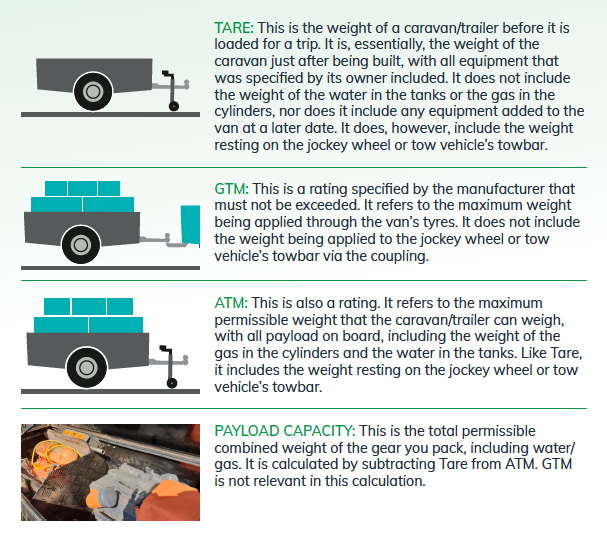


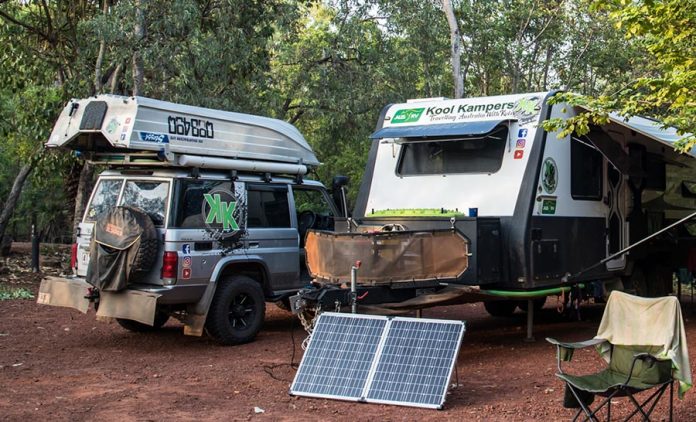

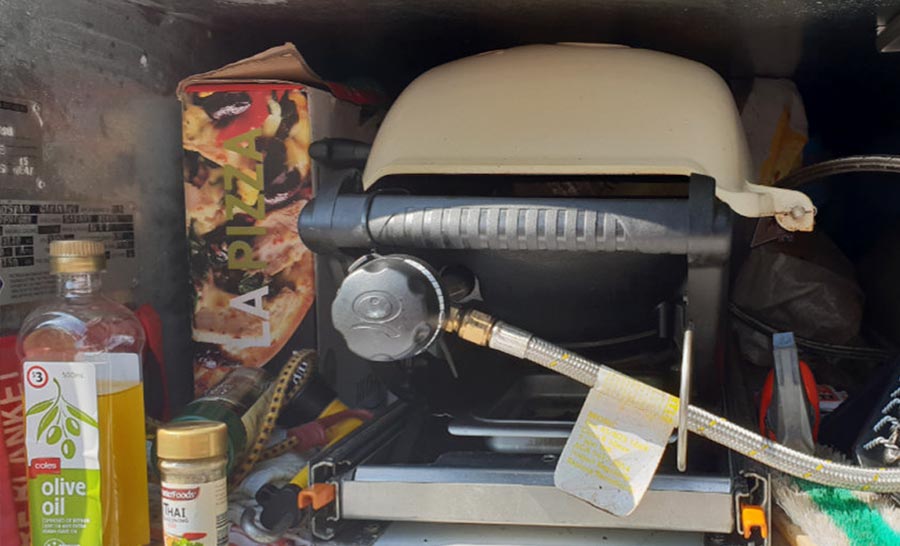
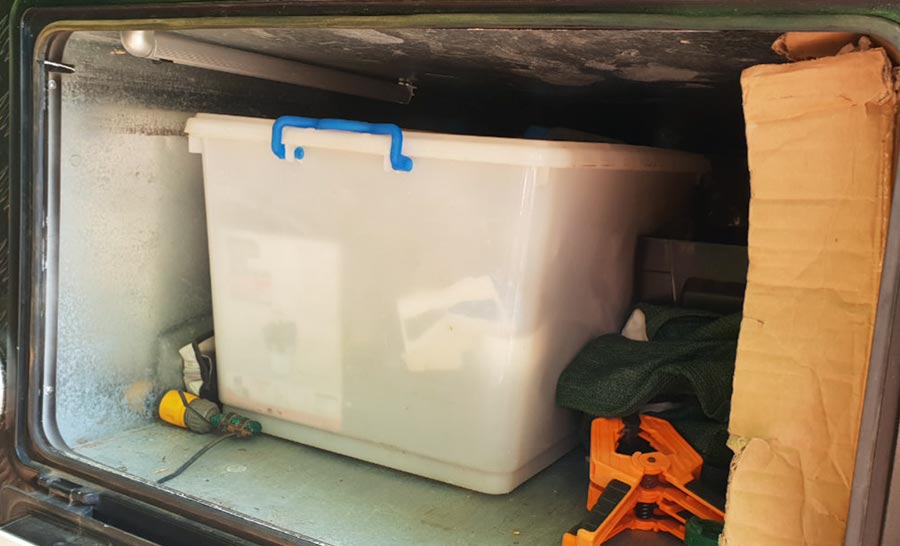
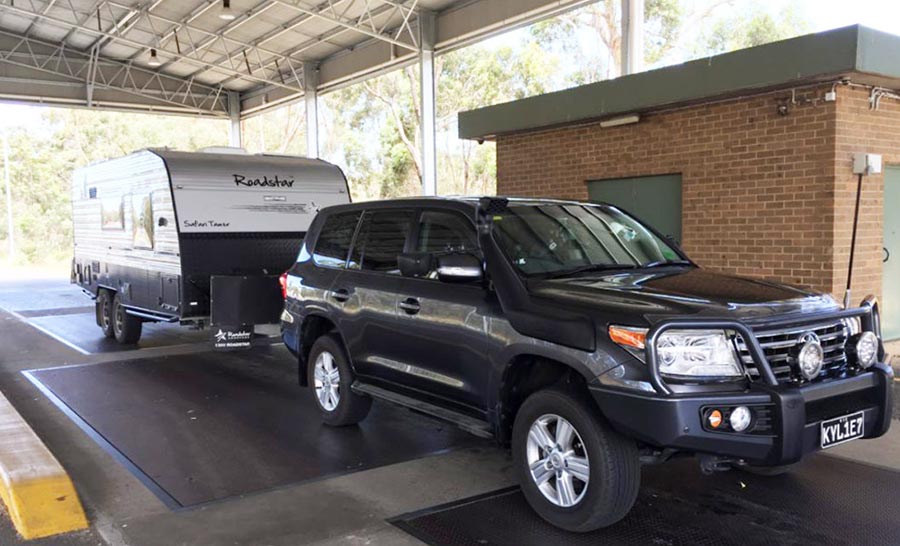


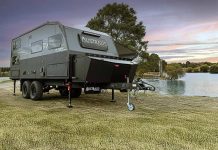

I would have thought that if the law says maximum of 100 kg downfall weight that would be empty or loaded and if the ATM is 3 ton that is the maximum weight that trailer could weigh on its own including the downball weight